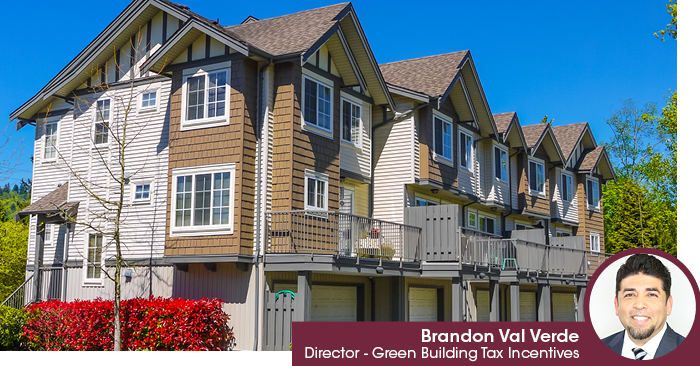Follow KBKG on Social Media
By Brandon Val Verde | Director – Green Building Tax Incentives
Minnesota is the first state to extend prevailing wage requirements to affordable housing developments utilizing Low-Income Housing Tax Credits (LIHTC). Under this new law, multifamily housing projects with more than 10 units that receive LIHTC funding must now pay construction workers at locally mandated wage rates. Additional requirements apply to certain Tax Increment Financing (TIF) projects and government-funded developments that receive sales tax exemptions.
KBKG Insight:
Developers facing higher labor costs due to prevailing wage requirements should consider stacking the 45L Energy Efficient Home Credit alongside LIHTCs. The 45L credit offers up to $5,000 per qualifying unit—providing a powerful way to recapture project equity. To qualify, developers must meet Energy Star or Zero Energy Ready Home standards and obtain third-party certification prior to occupancy. Strategic planning is essential, especially under new state rules that now include enhanced reporting and compliance obligations.
Background
The legislation, passed during Minnesota’s 2023–2024 legislative sessions, introduces several provisions:
- Prevailing wage standards apply to:
– LIHTC-funded projects with 10+ units
– TIF-supported multifamily projects of 25+ units or receiving $100K+ in assistance
– County, city, and school district projects using sales tax exemptions - Developers must now disclose prior labor violations and, in some cases, submit wage theft prevention plans for contractors with non-compliance histories.
- Minnesota Housing (the state finance agency) will collect certified payrolls every 14 days for projects meeting specific thresholds:
– $200,000+ in grants
– $500,000+ in loan funding
– Federal LIHTCs awarded after January 1, 2025 for developments with 10+ units
- Prevailing wage standards apply to:
These enhanced standards aim to protect workers but may increase development costs, affecting affordability and feasibility.
KBKG Insight:
45L, and other tax incentives like the 179D Tax Deduction, can serve as a critical tool in offsetting increased compliance and labor costs. The credit is particularly valuable for developers working on affordable housing, where budget margins are tight. By proactively integrating energy-efficient designs and coordinating with tax credit professionals early, developers can preserve financial viability and maximize total incentives.
Conclusion
Minnesota’s prevailing wage expansion is a historic move for affordable housing. While it promotes worker protections, it also adds pressure to development budgets. Projects leveraging LIHTCs should now consider pairing them with 45L credits to preserve profitability and ensure compliance under the state’s stricter framework.
Action Steps
To learn how the 45L Energy Efficient Home Credit can enhance your LIHTC project’s return under Minnesota’s new prevailing wage law, contact a KBKG expert below.
About the Author
Brandon Val Verde | Director – Green Building Tax Incentives
Brandon Val Verde is a RESNET Certified HERS Rater and Director within the Green Building Tax Incentives practice of KBKG. He has helped clients pursue and maximize various Green Building Tax Incentives by performing the necessary energy simulation modeling using various software packages that have been approved by the IRS and Department of Energy… Read More



